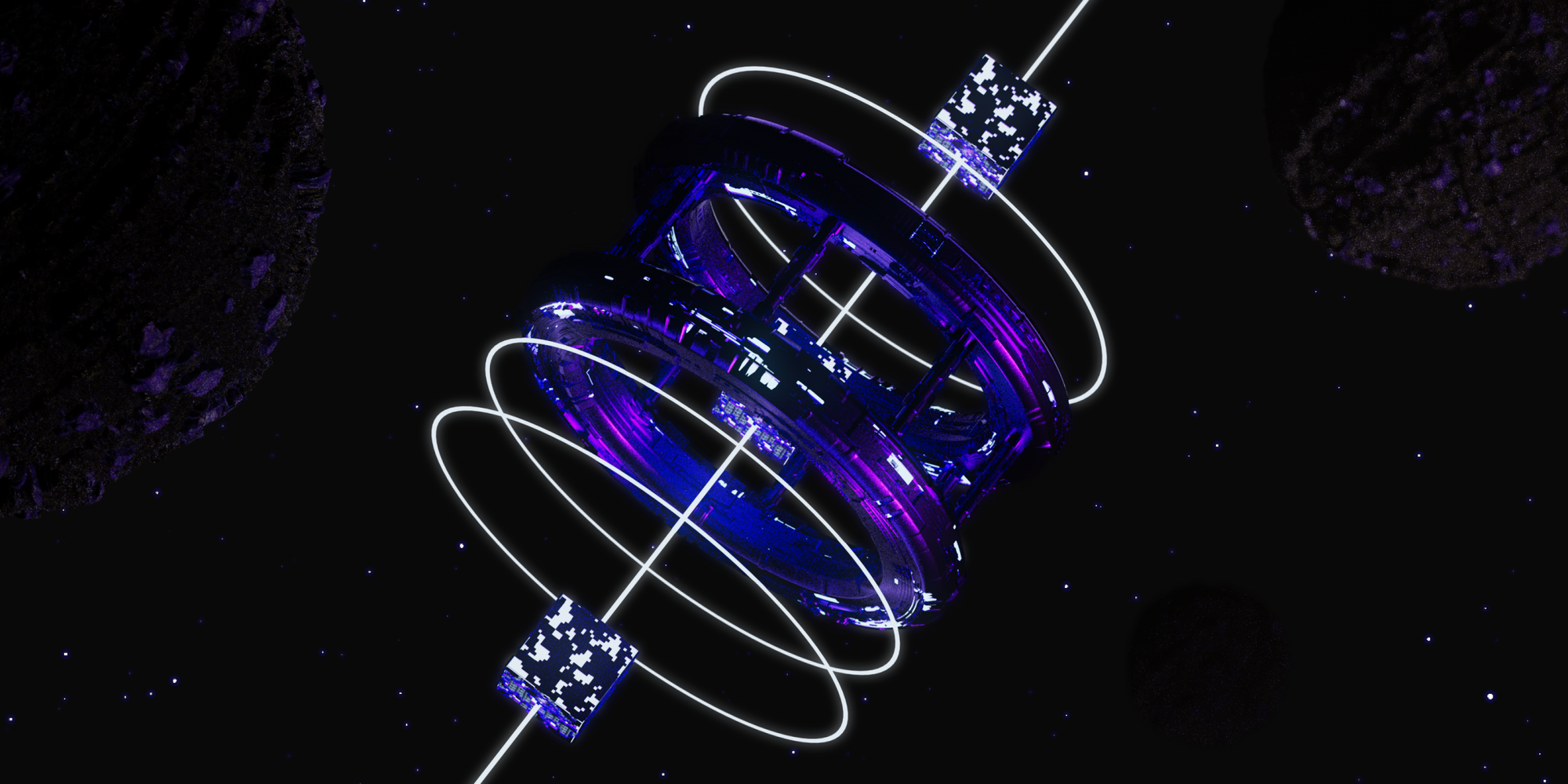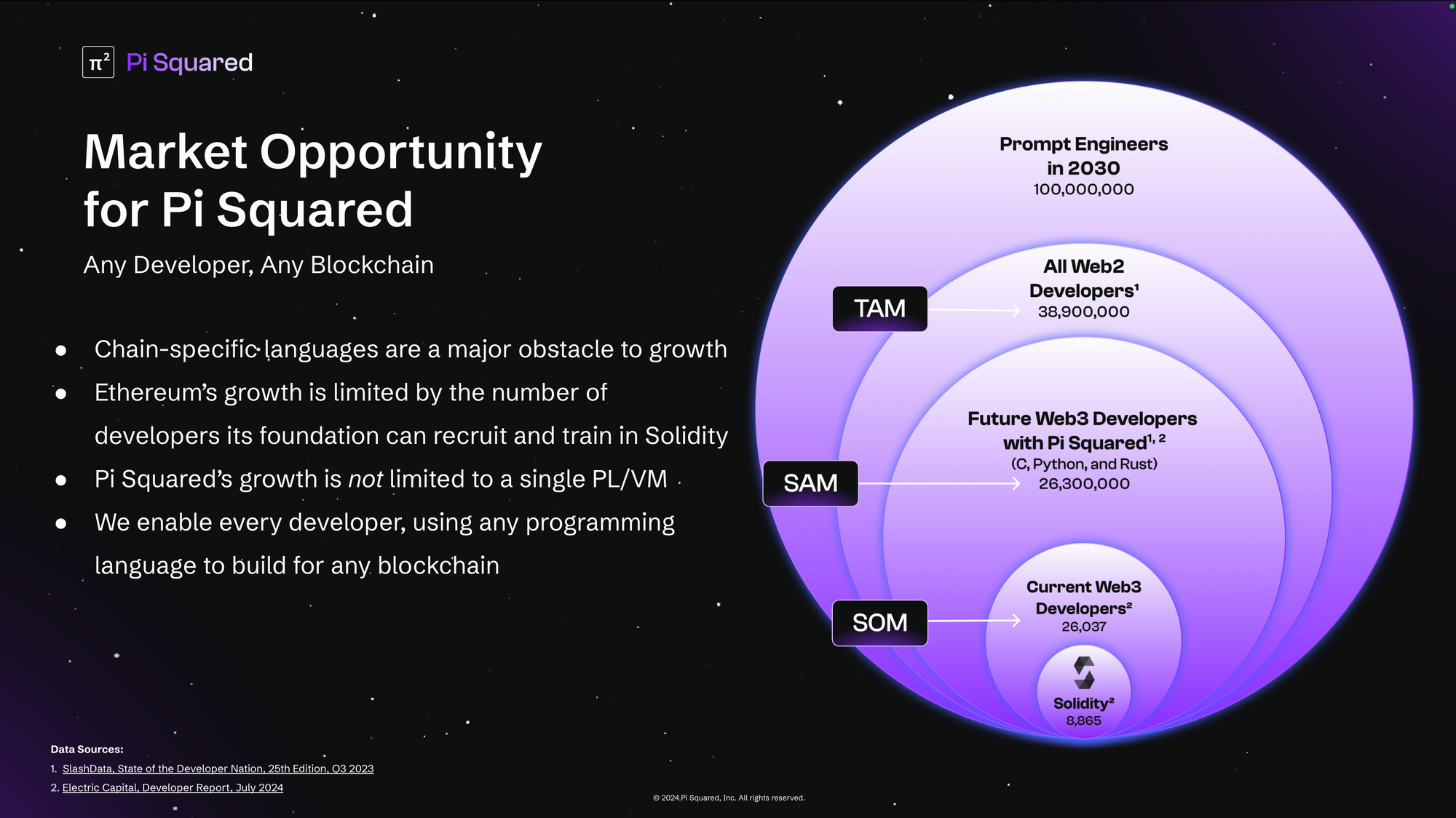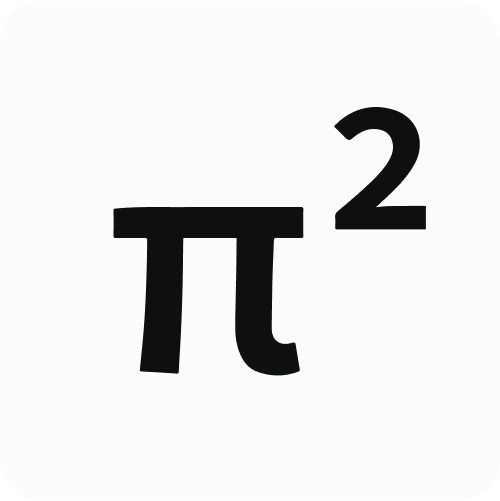Pi Squared’s Universal Language Machine (ULM): Revolutionizing Web3 Development
Watch the launch of our Universal Language Machine (ULM) at Devcon. ULM enables developers to build in any programming language for any blockchain.

During Devcon 7, we unveiled a groundbreaking innovation that’s set to redefine Web3 development: the Universal Language Machine (ULM). This revolutionary platform empowers developers to write and execute programs in any programming language on any blockchain, shattering barriers that have long hindered adoption.
Watch our ULM Workshop from Devcon!
By leveraging over five decades of research in formal semantics, ULM eliminates the need for traditional language implementations such as compilers and interpreters. Its “Bring Your Own Language” (BYOL) feature allows developers to use familiar languages - C, Python, Rust, or even domain-specific languages - to create smart contracts and decentralized applications (dApps). With ULM, universality is no longer an abstract concept but a practical reality, transforming every developer into a potential Web3 innovator.
The Power of Formal Semantics
At the heart of ULM’s innovation lies the concept of formal semantics—a rigorous, mathematical definition of a programming language’s behavior. This approach bypasses the need for language-specific tools like compilers or interpreters, replacing them with computation based on mathematical proof. The integrity of these proofs can be verified using simple proof checkers, ensuring reliability and eliminating bugs. ULM transforms this theoretical foundation into a practical solution, enabling developers to define and upload the semantics of their preferred languages to the platform. Once uploaded, these semantics allow anyone to execute programs written in that language, fostering a collaborative and efficient ecosystem.
Breaking Barriers for Web3 Adoption
Imagine a game developer wanting to migrate their project, built in Unity, Unreal, or JavaScript, to the blockchain. Traditionally, this would require the team to learn a blockchain-specific language like Solidity - a significant barrier to entry. With ULM, developers can write both the game and its smart contracts in their preferred languages, streamlining the process and preserving existing workflows. This flexibility makes Web3 more accessible, empowering developers to transition seamlessly from Web2 to blockchain-enabled ecosystems.
Universality is more than a technical achievement - it’s a paradigm shift. Just as human languages can marginalize those who don’t speak a dominant tongue, programming languages create barriers for developers. ULM addresses this challenge by offering a universal framework where any language can be integrated and executed. Inspired by the K framework, ULM separates language design from tool implementation, allowing developers to upload formal language semantics and automatically generate tools like compilers, interpreters, and verifiers. This innovation reduces complexity, accelerates development, and democratizes Web3 access.
Expanding the Web3 Developer Ecosystem
Web3 currently boasts around 26,000 developers, a number dwarfed by more than 38 million Web2 developers worldwide. ULM has the potential to bridge this gap, enabling millions of developers who know and love working with popular languages like Python, C, and Rust to seamlessly create smart contracts and dApps. Removing the need for specialized blockchain knowledge, ULM opens the door for tens of millions of developers to enter the Web3 space, unlocking unprecedented growth for the ecosystem.

Pi Squared’s Universal Language Machine (ULM) is more than a product—it’s a movement to make Web3 development universally accessible. Whether you’re a seasoned blockchain developer or new to the space, ULM empowers you to innovate without limits. Visit our Developer Portal to learn more, and explore our documentation. Together, we can turn every app into a dApp and make the future of Web3 a reality for all.
Stay tuned for more updates, and thank you for joining us on this exciting journey!

